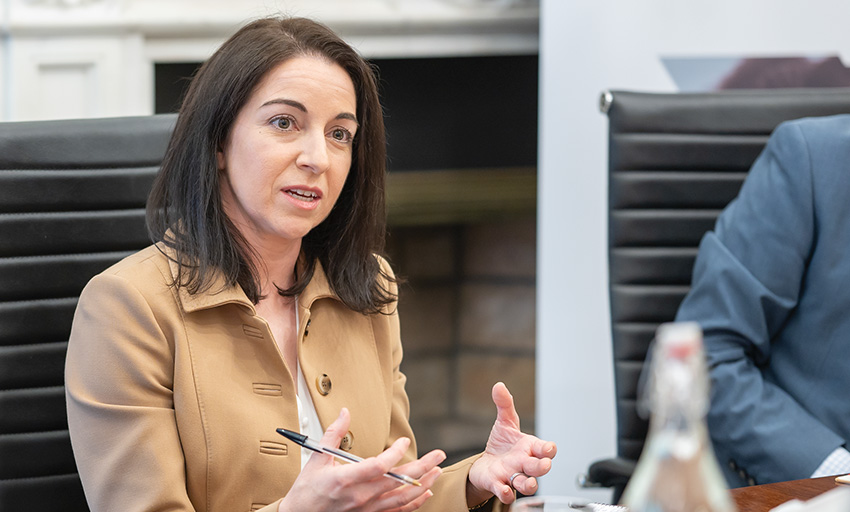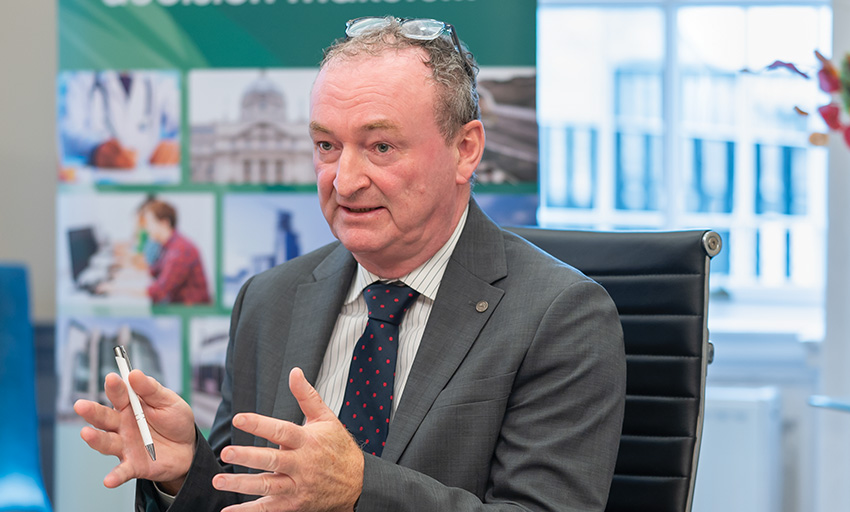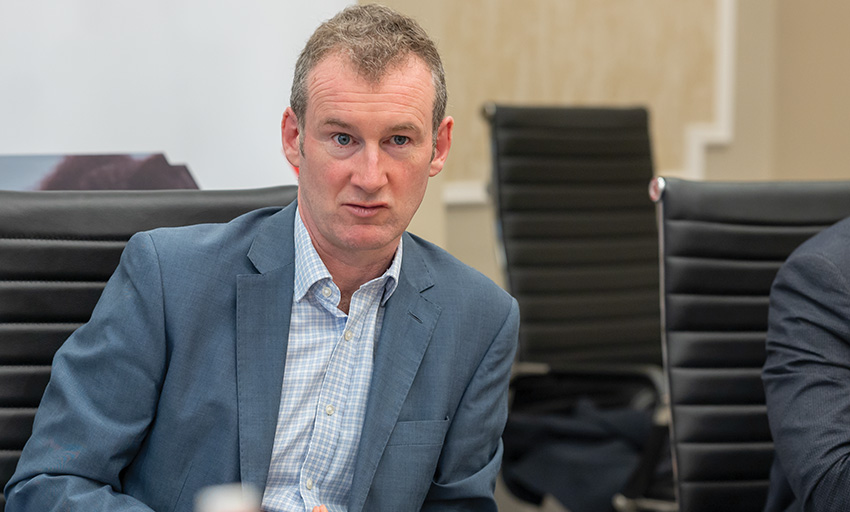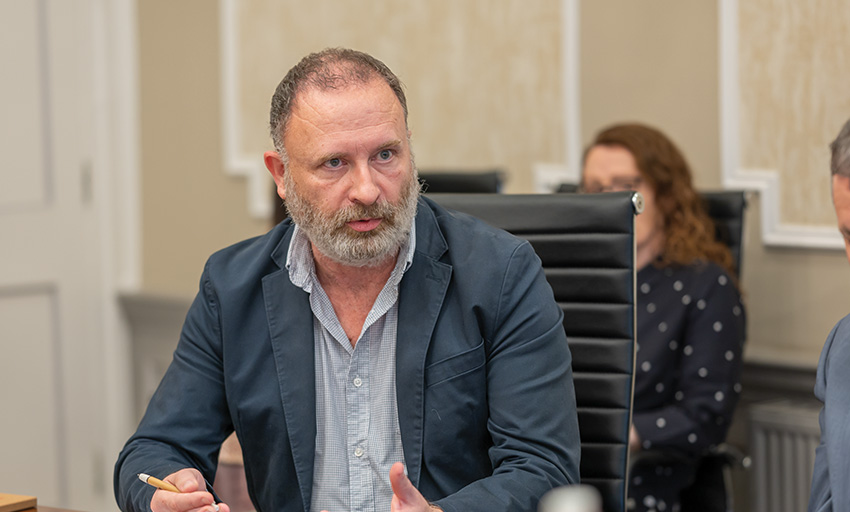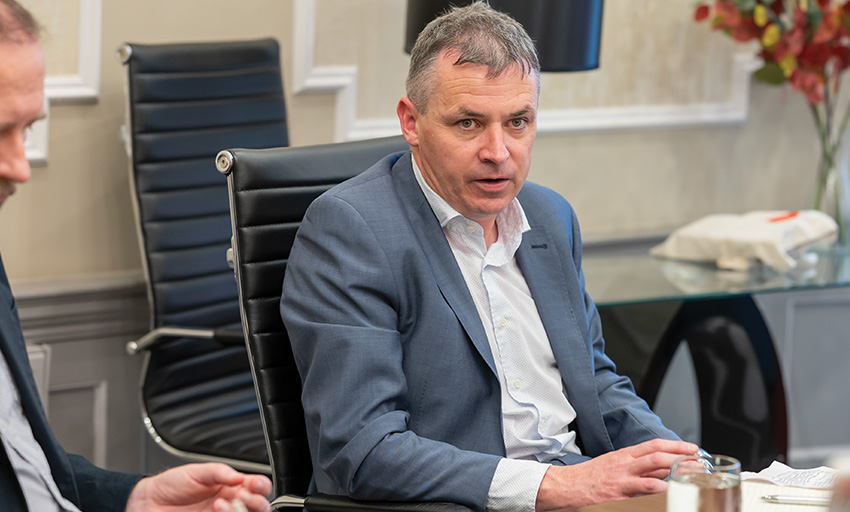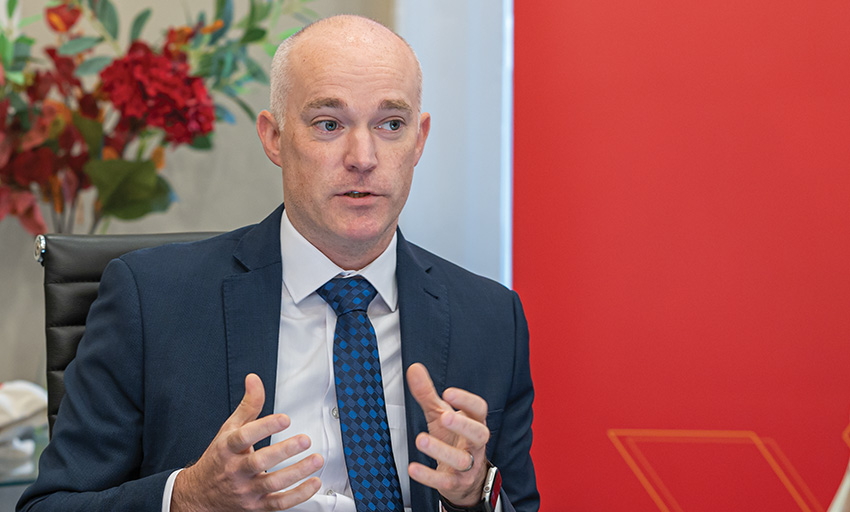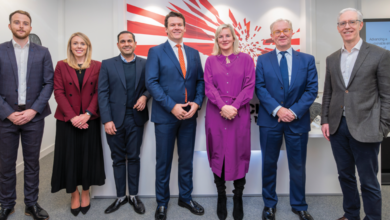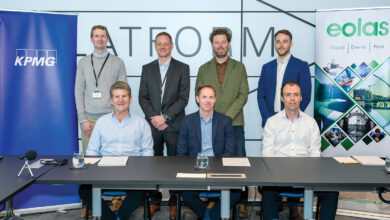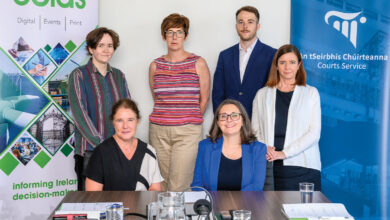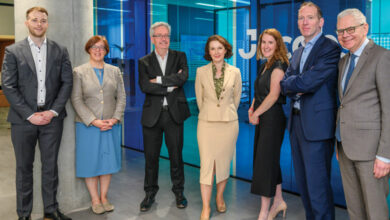Citizen and business engagement in an age of disruptive technological change
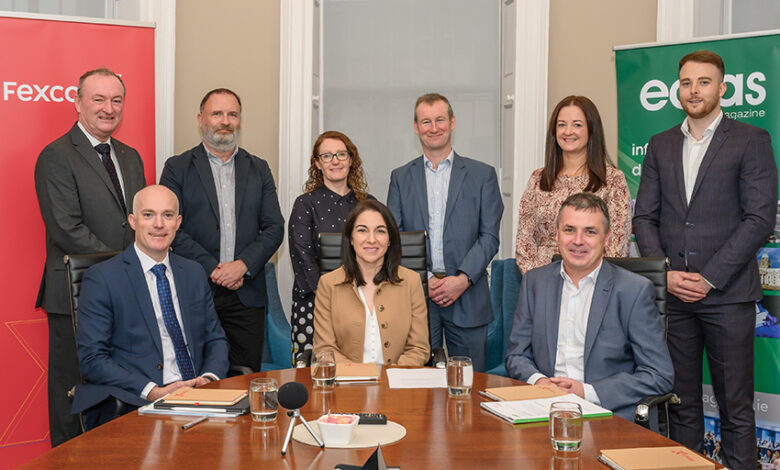
Fexco Managed and Advisory Services hosted a round table discussion with key stakeholders across the public, semi-state, and private sectors to discuss how citizen and business engagement can be enhanced amid pervasive digital disruption.
How are citizens’ and businesses’ expectations of public services evolving in the current era of technological innovation?
Nick Connors
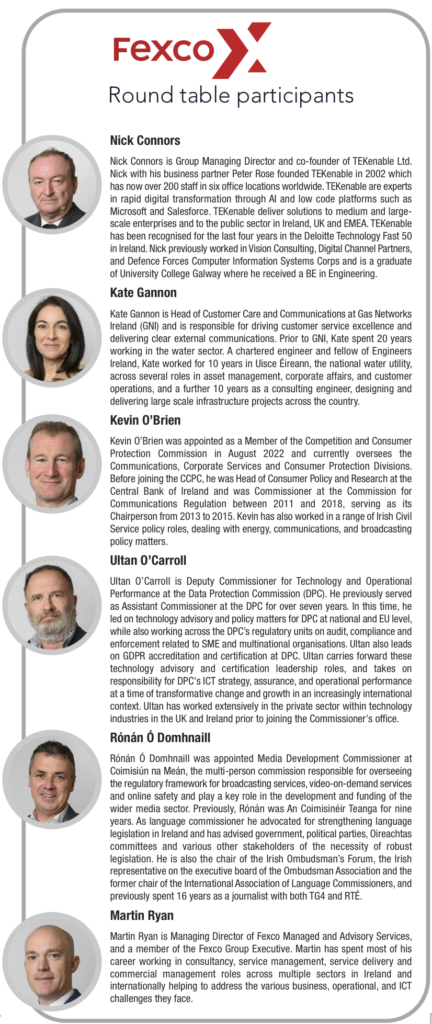
Citizens’ expectations are high in relation to services across the board and the personalised experience is key to them. The challenge is that personalised experience is constantly evolving; an experience today will be very different in 12 months’ time. That is the challenge for us all, keeping pace with that expectation. While technology is continually changing, the process and people behind it sometimes struggle to match that. When people pick up the phone or access online, they need to know the organisation on the other end knows who they are. Anything less than that is well below expectation.
Kate Gannon
As a network operator, Gas Networks Ireland has both customer-facing services and operational safety services for all citizens. The advances in technology and digitalisation means both customers and citizens have new expectations in terms of speed, ease of use, and new communications channels. We are using new technology to optimise our customer-facing services without compromising the critical safety service we provide to all citizens, so if an individual suspects a gas safety incident, they can still immediately connect with a human being at GNI to share critical information and be reassured that our response teams are on the way.
Kevin O’Brien
People expect fast and efficient consumer experience, and when they do not receive this, they are unhappy. This is where technology companies can play a positive role, creating a seamless process whereby people get what they want quickly. It also must be the case that when things go wrong or someone needs more information, they can access the necessary information quickly. However, there is also a confusing landscape in terms of rights and access to information. How those things are balanced is important.
Ultan O’Carroll
Citizens and the organisations expect accessible services, and now that means mobile as well as a static website. When dealing with the State, people expect things to be fair, accurate, functional, and safe. They expect that what they tell you is private, that it will not be shared with anyone else without a well define need or used for anything other than what they are providing that data for. The Data Protection Commission’s expectation is that services are accessible but secure and respect people’s rights and freedoms.
Rónán Ó Domhnaill
As technology evolves, people expect a service that is safe, secure, and agile. A good example of that is services provided by the Passport Service; it is incredible that I can take a photo at home, and have my passport renewed and returned within a week, safely and securely. A recent trust survey for departments and agencies found the Passport Service had gone from close to the bottom to close to the top, illustrating that people react positively to good services when they get them. The challenge for Coimisiún na Meán is to ensure that when people are engaging with big tech – for instance, through social media – that it is safe, and they can avoid being bombarded with disinformation. We cannot scrutinise each individual service provided, but we can get platforms to act in a more responsive way.
“We continually seek to take an established remit and make it as modern and engaging as possible.”
Kate Gannon
Martin Ryan
Evolving is the key word. Regardless of it being public services or private sector services, expectations are simply changing at an unprecedented pace. Expectation, at its core, is about experience, and more often than not, that is human experience. Citizen and business engagement cannot go too far wrong if they put human experience to the fore of their service design and allow technological advancement to enhance or enable improved personal human experience, rather than replace it. Providing a good service comes with the expectation of convenience, but also for a personalised experience, and the challenge for governments and semi-states is to design services for personalised experience, but at scale.
What emerging trends is your organisation observing in technology, digitalisation, public services, and semi-state services?
Kate Gannon
As a utility managing critical infrastructure for the State, Gas Networks Ireland recognises the opportunity in technology trends to enable continuous improvement in both our technical operations and our customer-facing services. We have also observed that citizens who engage with our safety messaging remit are now receiving information in new and briefer formats with the advent of mobile devices and social media. This is a consideration for us when communicating safety messaging and articulating the transformation of the network to renewables gas because these are more technical subjects.
Rónán Ó Domhnaill
Coimisiún na Meán is processing many complaints relating to online safety, and we are trying to figure out how to communicate with people under 25, whether it is through webchat, over the phone, or whatever format. For instance, most experiences indicate that this cohort of people will not answer the phone, so that is a big challenge.
Ultan O’Carroll
Not everyone is digitally literate, and therefore the human aspect is still very important. When talking to a chatbot, currently at least, you do not want that chatbot making decisions. You probably want someone at the end of the line that you can talk to and that makes services more accessible. We must remember the people – customers and citizens – amid prevailing hype cycles. If we adopt certain technologies, we must be careful and considerate. In some cases, these technologies can be characterised as solutions looking for problems. We will see that evolve, and this brings certain risks and some of those involve skills and expertise that we might not yet have in government. It is very important that public and private organisations account for these concerns and design these services from the bottom up, with protections in mind for people.
Martin Ryan
There is certainly a wave of new trends with intelligent automation including AI, IoT and quantum computing being examples of current disruptors, but will be accompanied by many more advancements in the future. However, there are two key considerations that should form part of service design, particularly when looking to apply new technologies and intelligent automation to your services: tiering of the criticality of services and segmentation of your user base. A service providing important user advice could have a very different tiering to a service providing general information, with both potentially allowing for different channels of communication with citizens or customers. However, when you introduce different segmentations of citizen or customer demographics, your choice of channel may differ greatly. Therefore, when designing services to utilise these new trends in technology and digitisation, you cannot do so without identifying the criticality of the service, coupled with segmenting potential users of the service.
“Citizens’ expectations are high in relation to services across the board and the personalised experience is key to them.”
Nick Connors
Nick Connors
That is the big challenge from a TEKenable perspective. Technology is an enabler, tools that will help you. The basics such as your data and processes need to be in place with the technology. We get access to the very latest technology before public release. Generative AI is all the hype at the minute and is a game changer, but unless the basics are in place you will not achieve the benefits. Some of the latest technologies cannot be immediately implemented and our challenge is deciding what works best for organisations.
Kevin O’Brien
One of the most significant trends we see is in advertising. This is distinct from the provision of public services where it is presumed that the citizen wants them. We know that advertising revenues have pivoted online now, but the way in which it is happening more and more utilises personalisation and choice architecture – both in terms of how the marketplace is set up and how people are nudged towards products. Advertising has become more complicated and entangled with the provision of services and Competition and Consumer Protection Commission research is moving into that space. Overall, the very sophisticated tailoring of messaging to individuals is a trend for both good and bad.
“Determining how to make the right information available at the right moment is where digital technologies can be best in helping people.”
Kevin O’Brien
What are some of the opportunities posed by these trends?
Kevin O’Brien
Part of the Competition and Consumer Protection Commission’s remit is the provision of online tools and services for mortgages and other financial products. We aim to be a recognisably independent, reliable comparison website. That is a digital service that people want and seek to understand. As such, we attempt to seek to bring them to our website so that when they are about to make a major decision in their life, they will have relevant information immediately available. More and more, it is through digital means that people receive information like that, and that is a real positive for consumer welfare.
Martin Ryan
Human experience of public, semi-state, and private services comes with high expectations and there are plenty of opportunities for emerging tech. If you are applying for a loan or a grant, automated decision-making can be a better user experience in the expectation that decisions are faster, the process could be more secure, and the decisioning process is learning and evolving with the application of AI. Of course, this needs to be balanced with the inevitable human intervention if things go wrong, and we see that service designers need to have an alternative channel to automated processing available for the optimal user experience. When we look at one or the other alone, that is where the problem lies.
Ultan O’Carroll
We must think ahead. For example, when adopting technology to automate a manual process and make decision-making much easier, there is likely a consequence. Expectations rise and change. We need skills to be upgraded to deal with these higher-level questions. In our case, we focus on data subject rights. That dynamic, where things are changing, brings with it a certain responsibility.
Nick Connors
The technology available is superb, but we must marry-in the non-functional areas. Once we get the two of those right, we have something truly transformational. If either one of those is out of sync, we have a problem. It could be simple or complex technology, but we need a non-functional wrap-around so that the citizen is comfortable that they are in a safe environment that is secure, with a clear end-to-end process that works.
Rónán Ó Domhnaill
We have been wondering about AI and the role it might play in regulating content that should not be online. AI could play a role ensuring that human eyes can avoid having to view material that they should not see, but again it is a question of ensuring that the online platforms use it for that purpose, for the right reasons. The idea is to do it quickly and to do it safely.
“One thing that could do with a bit more focus in public service is to consider that one size does not fit all.”
Ultan O’Carroll
Kate Gannon
One of the biggest remits that GNI now has is converting the pipeline network to transport renewable gases. Alongside this, we have a strong safety remit. As we convert the network and bring on renewable gases, the adoption of new technologies will be at the heart of that because we will need to ensure we are making these changes as efficiently as we can. While we have a huge period of transformation ahead of us and we will look to leverage innovation and technology, we must also ensure there is rigorous testing and high standards applied, so it is about harnessing these opportunities in a safe and systematic manner.
To what extent can public sector bodies and semi-state bodies protect citizens while continuing to promote technology adoption and innovation?
Ultan O’Carroll
There is the opportunity to do things right, to look at what the problem is, and what the process will be. That is not easy because you may have a complicated process that involves legislation and public bodies and so on, so defining this can take time. Approaches must be flexible and adaptable and may necessitate using good technological partners. It must be borne in mind that this process will be scrutinised. Having a data protection officer involved and undertaking a prototype can be crucial, as is having sight of who is collecting and processing your data. It is essential to establish how to correctly and compliantly share data, often sensitive data, with another part of government or the State when necessary. When seeking to provide a portal for citizens, for instance, there is a layer of priorities which must be acknowledged from functionality to security and data protection. This is fundamental: human rights and GDPR, as well as staff training and awareness.
Rónán Ó Domhnaill
In my previous role as Coimisinéir Teanga, we used to get complaints that website or interactive forms were available only in English. Getting public bodies and agencies to retrospectively make websites bilingual was difficult because the system was already in place. The only way to implement digital transformation is to get it right at the start, whether that is for safety or anything else. It is a challenging otherwise.
Ultan O’Carroll
A common rubric is that 80 per cent of the cost of a project happens after its launch, through maintenance and upkeep. Get it wrong at the beginning, and the costs will increase later.
“As technology evolves, people expect a service that is safe, secure, and agile.”
Rónán Ó Domhnaill
Nick Connors
The maze of legislation and data protection can be a frightening place but what we see is that the people in more progressive areas are working in an agile way, implementing small daily changes, and using technology that allows users make those changes. Inflexible thinking is a hindrance to progress or adoption because the world around us is changing daily regardless.
Kate Gannon
We have 720,000 customers directly connected to the gas network, so it is critical that we look at new technology from a customer information protection perspective and ensure we keep pace with legislative requirements for companywide information. Secondly, our role supports the security of supply of energy for the State. In that context, we are undertaking a huge amount of work in the area of cybersecurity to ensure that we protect that energy supply for all citizens.
Martin Ryan
Public sector, semi-state, and private sector stakeholders must be curious and have a healthy risk appetite. One of the things that we find very useful is mapping out user journeys at an early stage to determine customer sentiment at each point of the process, and where improvements can be achieved. In addition, with a curious mindset and a healthy risk appetite, being agile is key. We cannot be afraid to change fast. We need a healthy risk tolerance, but also be brave enough to fail fast and pull a project if needs be.
Kevin O’Brien
One observation relates to digital services that are effectively access to types of software, whether that is gaming, subscription services, or digital products. The dynamic with the consumer is different to the traditional marketplace and there are new challenges which must be addressed at the outset. Some of these challenges concern software upgrades: you buy something, and your hardware or the provider’s software changes, and in that case, you should not lose out or it should have been clear that this software would have a certain lifespan. It is a challenge to cater for the characteristics of non-tangible products in a world that is used to consuming tangible products. There is also now the matter of green economy and greenwashing. All of this ties back into the design at the beginning and the reuse of products and whether we are properly dealing with sustainability issues. Companies must consider these things and seek help from public bodies.
“Regardless of it being public services or private sector services, expectations are simply changing at an unprecedented pace.”
Martin Ryan
Amid disruptive technological change, how can public services, semi-states, policymakers, and regulators ensure effective citizen engagement in the immediate term?
Martin Ryan
There is one common factor in all of this. Each of us is talking about an end user; someone who uses our services. If we are designing services and being curious about technological change and want to ensure effective citizen engagement, we must engage with the citizens. We must involve and learn from them. We should utilise user focus groups to capture their experience, and leverage customer feedback and customer satisfaction channels for continuous improvements. If we do that, regardless of what disruptive technological change exists, then we will have designed services that users will use.
Kate Gannon
It is about keeping your core remit in mind, but also leveraging the change that is coming and how citizens engage with it. When I think of our safety messaging, we must deliver five very important messages annually, and so it is critical for us to ensure that this messaging is received and is memorable for all citizens. We created a campaign in partnership with Jedward in 2023 that has gone viral and the key to its success is that it is memorable and works well with new types of communications and devices by using striking images and short videos. We continually seek to take an established remit and make it as modern and engaging as possible.
Kevin O’Brien
The timing of the message is the key point. We find ourselves more and more in discussions drawing on behavioural science and economics. The research indicates that determining how to make the right information available at the right moment is where digital technologies can be best in helping people. We are exploring avenues to achieve this. Something we did for the first time in 2023 was run a stall at the National Ploughing Championships and that was very interactive, and it showed us that some of those traditional ways of communicating with people remain crucial.
Nick Connors
If user interaction and feedback are lost, no matter what you put in place, it will not be adopted. We must interact with the end user, from teenagers to the elderly. Sometimes we think that the elderly will not adapt to technology, but we often find that they are more receptive than the younger generation and this is relative to expectations. Technology is the easy piece for TEKenable, user expectation and change are the challenges. Perfect is never achievable, as user expectation is continually changing.
Rónán Ó Domhnaill
Our big piece of work in 2023 is an online safety code. It will be binding and will have associated sanctions, so it will be significant. The process of completing this process involves a lot of consultation. We have had a call for inputs, which was followed by a draft code, and we are now seeking responses on that both from the platforms and the public. There is so much consultation and that can be time consuming, but we must do it if we are going to get buy-in, trust, and a sense of ownership.
Ultan O’Carroll
One thing that could do with a bit more focus in public service is to consider that one size does not fit all. Different agencies, government departments, and departmental units have different needs, responsibilities, and accountabilities. Having a single service that applies to everyone does not work because people do not want, to use a hypothetical example, their healthcare data mixed up with their revenue data. These streams should be isolated because after all public service agencies should think more about their role as data controllers rather than the traditional department or agency or state. Generally, it is not a single individual who is charged with managing and controlling the data. Rather it is part of an organisation or a whole organisation, and that must be understood because things can go wrong with identifying roles under GDPR, and this can affect data sharing agreements. Or it may be that there is an agreement that allows for data sharing to once per year or for very specific purposes – and not continuously. And of course with public services, there are often very sensitive datasets involved. People expect that you will make the data given to you accessible and safe and that it will be used for the purpose they gave it to you for, not for anything else.

